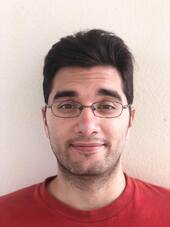Thomas Rafael Czank
|
 |
I was born in S├Żo Paulo in 1989 and completed all my studies there until I graduated in Physics at the University of S├Żo Paulo in 2012. During my studies at the University of S├Żo Paulo, I was lucky enough to work as an undergraduate researcher in two different laboratories. The first one was focused on new semiconductor devices, this is where I had my first contact with Quantum Mechanics. My second experience was in the Particle Physics Instrumentation Laboratory where I had a small experience working with simulations of radiation scattering through one of the ATLAS collaboration detectors.
In 2013 I got accepted in Tohoku University in Sendai after applying for the MEXT (Ministry of Education, Culture, Sports, Science, and Technology). There I did a Master's course in Solid State Physics with professor Riichiro Saito, I studied the near field effect of a silver sphere in Raman spectroscopy of metallic nanotubes.
During the Master's course, I took some classes about Quantum Field Theory and got really interested in Particle Physics. After concluding the Master's course I got an extension of the MEXT scholarship and moved on to the Experimental Particle Physics Group led by Professor Hitoshi Yamamoto for my Ph.D. course.
From the end of 2018, I concluded my Ph.D. and joined IPMU as a postdoc. During my PhD studies at Tohoku University I joined the Dark Sector group of the Belle collaboration. We pursued a search for a new U(1) gauge boson, Z’╝ć, which gauges lepton number differences. Besides its connection to sterile neutrinos, it was expected that it could also make a contribution to the magnetic moment of the muon anomaly due to its coupling to muons. With Belle II's record sensitivity and data samples on the horizon I am still interested in other dark sector candidates along with rare decay modes within the Standard Model, which demand more elaborate analysis strategies. Now I am currently continuing research in alternative dark sector models and Time-Dependent Charge Parity Violation (TDCPV) in the Belle/Belle II collaborations.
Back to Member List.






